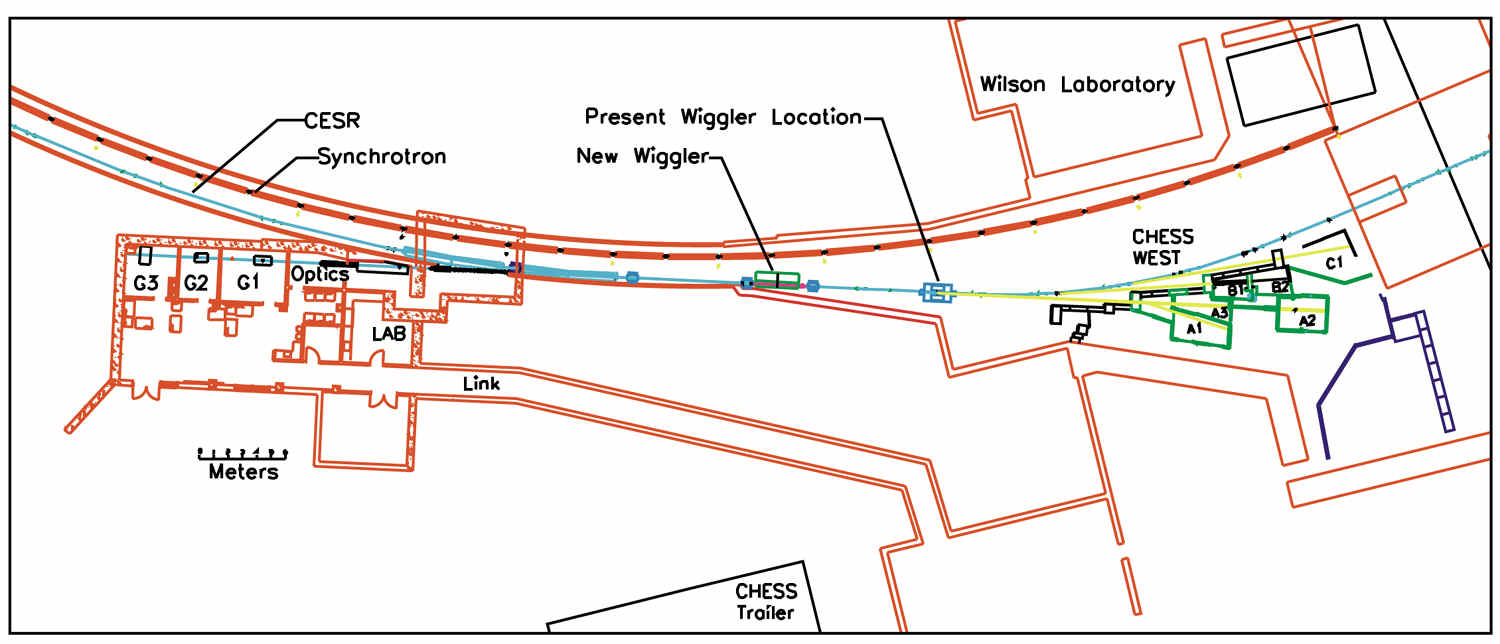X-RAY RUNS: Apply for Beamtime
2017 Nov 1 - Dec 21
2018 Feb 7 - Apr 3
2018 Proposal/BTR deadline: 12/1/17
2018 Apr 11 - Jun 4
2018 Proposal/BTR deadline: 2/1/18
CHESS is constructing a major addition that will provide
a leap forward in x-ray research capabilities in applied science such as
physics, chemistry, materials science & biology.
The present CHESS wiggler beam lines are over-subscribed by a about a
factor of three and sometimes the Cornell faculty members have to go
off-site in order to find enough synchrotron radiation beam time. The
new beamlines help to address this problem.

The new G-line (next letter in sequence after F-line) is supported and
operated by Cornell University faculty members and will be available for
their use for 80% of the time with the remaining 20% to be available for
general CHESS users. The beamline equipment is being funded by a
separate $2.5M NSF proposal to five Cornell faculty members: Profs.
Brock, Gruner, Cooper, Abruna & Ober. Cornell University provided the
building.
A new 50-pole wiggler and front-end assembly of the beamline are mostly
fabricated. The new wiggler will serve both CHESS West and G-line with
x-rays beams produced by both the electrons and positron beams traveling
in CESR in opposite directions. X-rays will be taken from the wiggler
and divided into three stations. Commissioning is expected in 2001.
Of the three experimental stations, G1 will be used for study in such
areas as the time-resolved response of large molecules to electric
fields, high-pressure stimuli and mechanical deformation. The systems to
be studied range from liquid crystals used in computer displays to
synthetic silk and other biopolymers. Another station will be used for
the study of the growth of semiconductor films and will heavily involve
faculty and students from the Cornell Center for Materials Research. The
third station will be for general purposes.
General CHESS users benefit from the extra availability of beam time,
flowing both from the 20% of G-line allocated to the general user pool
and from the reduction of Cornell usage on the existing beamlines, and
from additional beamline capabilities. It's a win-win situation for
everyone.
